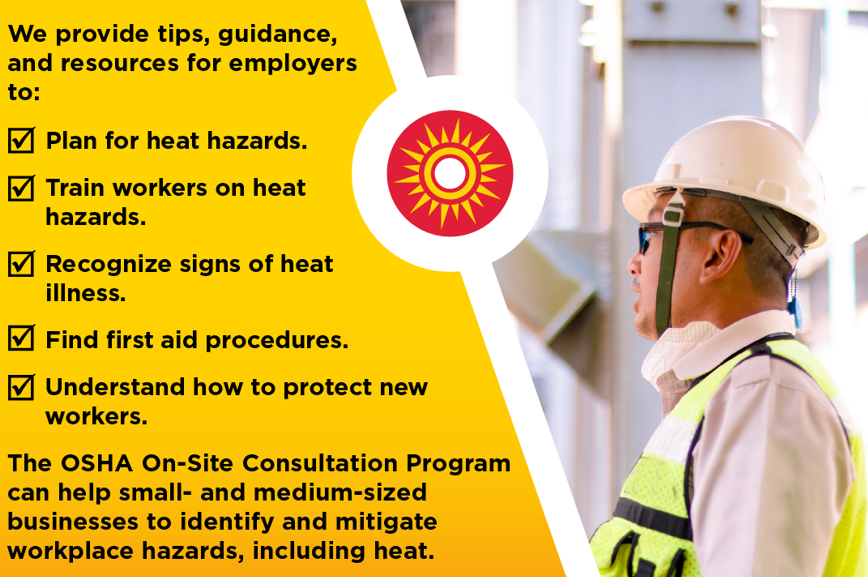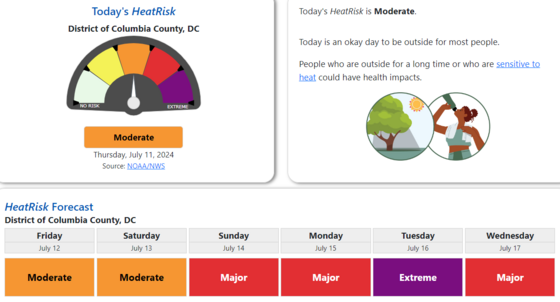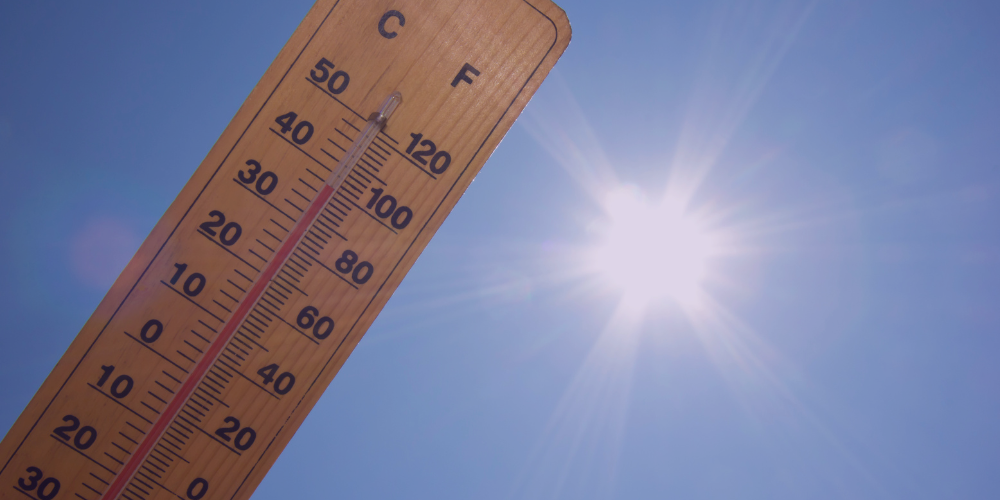Employers have a responsibility to ensure their workers are provided with a safe work environment, including heat safety. Similarly, it is the worker’s right to voice their concerns regarding work-related safety and to refuse to perform a task that may be dangerous such as working under certain conditions that would put them in danger of heat illness. Workers should be free to speak up about their concerns. This includes submitting complaints to OSHA without retaliation from their employers.

Heat illness training can help workers recognize heat illness symptoms in themselves and others and take appropriate actions to mitigate their symptoms. It can also prepare workers to react quickly in emergencies, assist workers affected with heat illness by providing emergency aid and potentially save lives. OSHA offers on-site consultations that can assist employers with formulating their own training plan. In addition, training resources such as posters and fact sheets can be found at OSHA.gov/heat.

Employers can implement heat prevention controls, which can help reduce the risk of heat illness by creating a cooler working environment. When setting up engineering control equipment is not possible, employers can modify work practices, such as adjusting work schedules and activities when high heat is expected. Adjusting working practices can include:
- Scheduling shorter shifts
- Requiring mandatory rest breaks in shady areas
- Ensuring workers drink adequate fluids
- Implementing a buddy system so that workers look after each other in times of excessive heat.
Employers can also protect workers by providing personal protective equipment such as hats and cooling neck wraps.

OSHA’s federal partners at the Centers for Disease Control (CDC) have developed a Heat & Health Tracker tool which provides information regarding local heat risk in the user’s local area so that employers and anyone in the community can prepare in advance and make appropriate adjustments to work or personal plans, according to the predicted heat risk. The tool can help employers determine the appropriate work schedules and shifts, increase monitoring of workers to ensure everyone has water, is taking breaks, has access to a shaded area, and takes heat preventive measures such as reducing workloads during the days when excessive heat is expected. To use the tool, just type in your zip code and users will be presented with information like the image above.

OSHA issued a Notice of Proposed Rulemaking (NPRM) on Heat Injury and Illness Prevention in Outdoor and Indoor Work Settings, a significant step toward a federal heat standard, which proposes protective measures that the agency has preliminarily determined would significantly reduce heat-related injuries, illnesses, and fatalities in the workplace. An unofficial version is now available for viewing at www.osha.gov/heat-exposure/rulemaking. The official version will be published in the Federal Register soon and there will be a public comment period for stakeholders to submit comments to OSHA on the proposed standard. OSHA encourages the public to participate in this rulemaking when the proposed standard is officially published in the Federal Register. Your input will help OSHA develop a final rule that adequately protects workers, is feasible for employers, and is based on the best available evidence.










